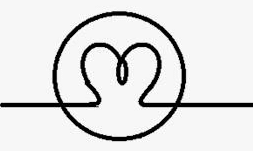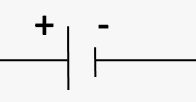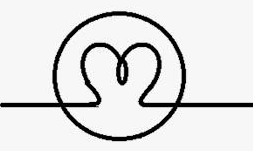Class 7 Science Chapter 10 Question Answers - Electric Current and Its Effects
Q1: Circuit diagram is a simplified conventional pictorial representation of an_______________.
Ans: Electrical circuit
Q2: A circuit diagram uses standard symbols for electric components. True/ False.
Ans: True.
Q3: Define electric circuit.
Ans: A closed path formed by connecting electrical components allows electric current to flow. This arrangement is known as an electric circuit.
Q4: A fuse is connected with a live wire or with a neutral wire?
Ans: The fuse is always connected with a live wire.
Q5: What is a cell holder?
Ans: A compartment that holds two or more cells together to form a battery is called a cell holder.
Q6: The combination of two or more cells is called a __________________.
Ans: Battery
Q7: A circuit is said to be open circuit or complete when current flows through it. True/ False.
Ans: False
Q8: What is a battery?
Ans: A combination of two or more cells connected together is called a battery. It is formed by connecting the positive terminal of one cell to the negative terminal of another.
Q9: The symbol for a battery is
a. 
b. 
c. 
d. None of These
Ans: C

Q10: Draw the symbol for an electric bulb in an electric circuit.
Ans:  Symbol of Electric bulb
Symbol of Electric bulb
Q11: Which one of the two minimises wastage of electricity, CFLs or an electric bulb?
Ans: CFLs use less electricity to produce the same amount of light.
Q12: Enlist some appliances that work on the property of the heating effect of electric current.
Ans: The electric room heater, electric roti maker, electric iron, toaster, hair dryer, electric stove, immersion water heater, food warmer, electric coffee maker, electric rice cooker and geyser.
Q13: Electric room heaters have coils of wire that produce heat, which are known as heating elements.True/False.
Ans: True
Q14: State some factors that affect the production of heat in a wire through which an electric current is passing.
Ans: Length and thickness of the wire, the duration of flow of current, and the material of the wire.
Q15: Name the principle of working of the electric fuse.
Ans: The electric fuse works on the principle of the heating effect of electric current.
Q16: What is an electric fuse?
Ans: An electric fuse is a safety device to prevent damage to an electrical circuit when excessive current flows through it.
Q17: What is the full form of MCB?
Ans: Miniature Circuit Breakers
Q18: What is the full form of CFLs?
Ans: Compact Fluorescent Lamps
Q19: State one advantage of MCB.
Ans: These switches turn off automatically when there is an overload or a short circuit.
Q20: An electromagnet does not attract a piece of iron. True/ False
Ans: False
Q21: A Longer line in the symbol for a cell represents its ------- terminal.
Ans: Positive
Q22: Name a safety device in a domestic circuit used to prevent electrical fire due to short circuit or overloading.
Ans: Electric fuse.
Q23: Enlist some appliances that work on the property of the magnetic effect of electric current.
Ans: Electric Bell, Motor, Fan etc.
Q24: What is meant by electric current?
Ans: Electric Current: Flow of electrons.
Q25: What is an electric circuit?
Ans: Electric Circuit: The closed path in which electric current flows
Q26: What happens when the current is switched ‘on’ in a room heater?
Ans: It becomes red hot and gives out heat
Q27: Give the factors that affect the strength of the magnetic field at a point due to a straight conductor carrying current.
Ans: Magnitude of electric current, perpendicular distance between that point and conductor.
Q28: Would any of the bulbs glow when the switch is in the ‘OFF’ position in a circuit?
Ans: No, the bulb will not glow when the switch is "OFF" because there is no closed circuit for current to flow.
Q29: What is a circuit diagram?
Ans: A circuit diagram is a simplified representation of an electrical circuit using symbols to depict various components
Q30: When the electric current through the fuse exceeds a certain limit, the fuse wire melts and breaks. True/False
Ans: True
Q31: How can a solenoid be used to magnetise a steel bar?
Ans: By inserting the steel bar inside the solenoid and switching on the electric current.
Q32: Why do we use copper wires in electrical circuits?
Ans: Copper is a good conductor of electricity, which allows the current to flow easily through the wires.
Q33: A current through a horizontal power line flows in a north to south direction. What is the direction of the magnetic field (i)at a point directly below it and (ii)at a point directly above it?
Ans: (i) West to East (ii) East to West
Q34: What do you mean by electromagnetic induction?
Ans: The process, due to which a changing magnetic field in a conductor induces a current in another conductor, is called electromagnetic induction.
Q35: How can we show that a magnetic field exists around a wire carrying current?
Ans: By using a magnetic compass which shows deflection.
|
111 videos|435 docs|28 tests
|
FAQs on Class 7 Science Chapter 10 Question Answers - Electric Current and Its Effects
| 1. What is electric current and how is it measured? |  |
| 2. What are the effects of electric current on conductors? |  |
| 3. How does electric current affect human health? |  |
| 4. What materials are good conductors of electric current? |  |
| 5. How does the resistance in a circuit affect electric current? |  |

















